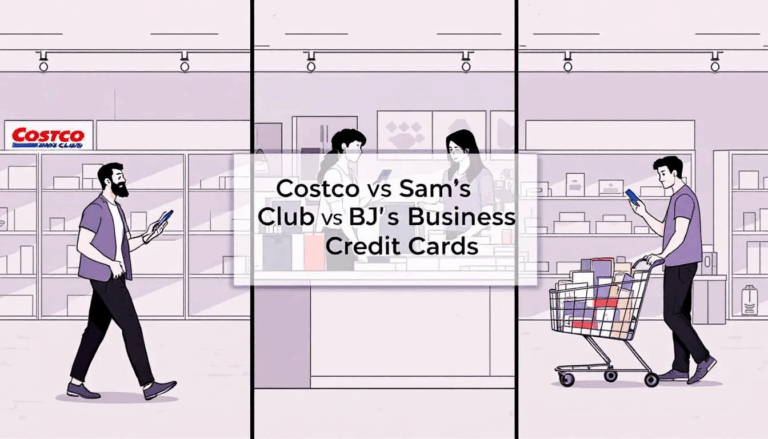What Are The Benefits of Government Contracts For Small Businesses?
Simply put, the various benefits of securing government contracts are too advantageous to be overlooked. You’d be doing yourself a disservice by not even exploring the kind of bids that are currently available.
Government contracts are especially practical if your business thrives on partnerships with big companies and is continually marketing itself to new customers.
Here are a few of the main reasons to pursue government contracts:
1. The Government is the Largest Buyer of Goods
The federal government spends about $500 billion on contracts each year, making it the largest buyer of products and services worldwide. You won’t find this amount of business opportunities in one place anywhere else.
2. Government Contracts Must Go to Small Businesses
Every year, the federal government sets a goal to award approximately 23-25% of that $500 billion to small businesses. That comes out over $100 billion up for grabs. Any company that works in the private sector knows that there’s never a guarantee that a potential client will choose a small business over a larger competitor.
Businesses can even find out which government agencies are yet to meet their annual contracting goal through the Federal Procurement Data system. Agencies in this situation usually award contracts to the first businesses that respond to their proposals.
3. You Have More Information about the Buyer
When most businesses issue proposals for potential customers, they have only a vague idea of the potential customer needs and their spending limit. In other words, the business doesn’t know how much money to ask for. If this were the case, the company would never waste time preparing proposals for companies that can’t meet their terms, nor would they unknowingly set unreasonable rates.
Well, this is the exact scenario you’re entering when you bid on a government contract. Federal law requires government agencies to publicly disclose the specific goods they are looking to purchase and how much they are looking to spend on those goods. You can view this information (including each agency’s total annual budget) on the Office of Management and Budget (OMB) website. The right Google searches can uncover the details of an agency’s entire contractual strategy and how they plan to use the goods involved in specific contracts.
How To Register For Government Contracts As a Small Business:
Government contracts available for small businesses can be found on the Federal Business Operations website, the SBA’s SUB-Net tool, and the System for Award Management database. Registering in this database is critical to qualifying to be a contracted vendor for the federal government.
But before you register, you must first complete the following three steps:
1. Get Your DUNS Number
You cannot register for government contracts without a nine-digit Dun & Bradstreet DUNS Number for each physical location of your business. This can be done for free via the online DUNS Request Service. To register for a DUNS Number, you’ll need the following information:
- Legal name
- Headquarters name and address for your business
- Doing Business As (DBA) or another name by which your business is commonly recognized
- Physical address, city, state, and ZIP Code
- Mailing address (if different from headquarters and physical address)
- Telephone number
- Contact name and title
- Number of employees at your physical location
- Whether you’re a home-based business
2. Find your Business’s NAICS Code
Next, you must find your North American Industry Classification System (NAICS) code. This code places your business in a category based on your products or services. If you sell multiple types of products or services or serve numerous industries, you may need various NAICS codes. You can find your NAICS code by looking through the list on the US Census Bureau.
3. Confirm You Fit the Standards for Size
To be officially categorized as a “small” business, you must meet the SBA’s size standards. Companies that exceed these standards cannot qualify for government contracts reserved exclusively for small businesses.
You can see if your business fits the bill. Just use the SBA’s Size Standards Tool. You have to enter your NAICS number and some general information about your business (number of employees, annual revenue, etc.). The NAICS number plays a role because the standards for “small” vary from industry to industry. For example, in the manufacturing business, a business with as much as 500 employees can still technically be categorized as “small.”
There are exceptions, however, for some instances. You can view these exceptions in Title 13 Part 121.201 of the Code of Federal Regulations (CFR) or in the SBA’s table of small business size standards.
4. Register in the System for Award Management (SAM)
The System for Award Management (SAM) database contains profiles of all small businesses currently pursuing government contracts. This is essentially the federal government’s version of LinkedIn. Instead of using Google or social networks to search for potential partners, government agencies use SAM.
Thus, it would be best if you made your SAM profile as accessible and attractive as your business’s LinkedIn profile. Your competitors have likely devoted significant effort to ensure that agencies can easily find them through relevant searches. Like LinkedIn, accessibility on SAM is based mainly on the terms you use to describe your business.
So, before constructing your profile, perform a few searches using keywords you’d like your profile to show up for. Then, see which businesses show up and how they describe themselves. Keep in mind that your profile must display the specific products or services you plan on selling to government agencies. These might be different than the products or services you usually offer all potential customers.
5. Write Your Capability Statement
The most important part of your SAM profile is your capability statement. Think of this as a mix of your elevator pitch and executive summary. In as few words as possible, you must describe what your business does and why choosing you would be particularly advantageous for government agencies. You don’t want to get too technical or professional here. If anything, you can make your SAM profile a condensed version of your LinkedIn profile. Both have the same goal: getting peoples’ attention and proving that you’re exactly what they’re looking for.
Your SAM profile must also be updated at least once a year, or else it will deactivate. Many businesses update their SAM profiles much more frequently (monthly, quarterly) to accommodate the latest contracts and include their most recent achievements.
6. Obtain Past Performance Evaluation
When studying your competitors’ SAM profiles, you may see numerical ratings that reflect their track records with previous customers. You can obtain your rating via an Open Ratings Inc. Past Performance Evaluation. This rating system analyzes survey responses from your previous customers to generate a historical performance rating.
How To Find Government Contracts For Small Businesses:
Now that you’ve registered on SAM, you can move on to finding contract opportunities that suit your business. Here are the primary resources small companies use to search for government contracts:
1. Start with FedBizOps
The number one resource for contracts valued at $25,000 or more is FBO.gov, the website for Federal Business Operations. This site can also show you the contracts that were awarded to small businesses in previous years. You may want to consult this information when preparing your proposals.
2. Explore Subcontracting
When a company wins a direct contract with a government agency, this is technically known as a “prime” contract. These are the only contracts you’ll find on the FedBizOps. Another form of contracting involving small businesses and government agencies is subcontracting.
Let’s say a small business strikes a prime contract but then realizes it does not have the resources to complete the project within the contracted time frame. Subcontracting allows that business to pay another business to complete a portion of that project. Smaller companies that are interested in government contracts might consider subcontracting before bidding on contracts directly. You’ll learn how the original vendor won the contract along with the kind of terms to expect when you eventually bid on prime contracts. Having subcontracting experience on your SAM profile may also increase your appeal for agencies.
The SBA runs a subcontracting database called SUB-Net. Like the FedBizOps, you can search SUB-Net for available opportunities.
3. Direct Marketing Strategies
Due to the unique nature of your industry, you may know exactly which government agency has the right contracts for you. In this case, you can market yourself to that agency through direct communication. First, use FedBizOps to search for available opportunities. Then, contact the agency and explain why they should choose your business over the other bidders. You can also attend procurement conferences and other industry-wide events to speak to agency representatives.
The same strategy can be applied to subcontracting opportunities as well. You’d search SUB-Net and then reach out to businesses looking for subcontractors in your unique area of expertise.
Let’s say you know the agency you want to work with, but they don’t have any available contracts right this moment. You can still start marketing yourself to the agency directly by attending training and other local events involving your desired agency. Contact your local SBA district office for information on these events. Building a reputation within the government contracting community as early as possible can dramatically increase your chances of winning a bad. Like any other crucial business partnership, networking can grant you access to opportunities that might not have come your way otherwise.
4. Bid-matching Services
Maybe your business does not fill a highly specific niche and offers more general products or services. In this case, a bid-matching service could be beneficial because you could theoretically take on projects for multiple government agencies. Bid-matching services connect you with contracting mentors who help you find contract opportunities, draft the perfect proposal, and walk you through other elements of the partnership.
You can find free bid-matching services at most local Procurement Technical Assistance Centers. Private bid-matching services come with a cost, but they also provide more customized services.
How To Write a Proposal For a Government Contract:
If you run a service-based business, you’re probably familiar with the process of preparing proposals for potential clients in the private sector. Making proposals or bids for government contracts, however, is a very different process. It’s much more complicated, mostly because of the substantial paperwork involved. Many businesses fail to fulfill the agency’s expectations for information and follow the required format.
1. Know the Different Solicitation Methods
Government agencies can request proposals in several ways. Each solicitation method has its requirements for proposal format and the submission process. The method an agency uses says a lot about their expected response. And if you don’t understand the differences between each method, you won’t know what kind of information and presentation is required to win the contract.
Here are the three most common solicitation methods featured on FedBizOps or any other source of available government contracts:
Request for Quotation (RFQ)
This is the least complicated method, and it’s typically used for contracts under $150,000. However, what’s considered “simple” for government standards is probably more tedious than any proposal you’ve completed in the private sector. To understand how an RFQ should be completed for your industry, study previous RFQ proposals on the FedBizOps database.
Request for Proposal (RFP)
Requests for Proposals are used for larger contracts. For this reason, there is typically room for negotiation when it comes to price and terms.
The initial RFP outlines the requirements and terms of the desired project, along with the information required in the requested proposal. This information must be 100% accurate, so if you’re unsure about the instructions, contact the contracting officer. You don’t want to submit a proposal unless you are sure you’ve included every piece of the requested information.
Invitation for Bid (IFB)
Invitations for Bid do not involve negotiation, so the price and terms you set are final. As you can imagine, contracts solicited through this method typically go to vendors that set the most desirable price.
Thus, you must be very careful when setting your prices. In addition to insufficient information, setting blatantly inappropriate prices will immediately result in rejection.
2. Follow the Required Format
We’ve repeatedly emphasized the following instructions because failing to do so is a prevalent reason for rejection. Agencies will only consider proposals that adhere to all directions regarding format (i.e.bring order of your paperwork) and submission (i.e.dramatically requested time frame).
So, if you have any uncertainties in either area, you should seek answers through resources like the SBA’s free “Government Contracting 101” online course.
3. Set Appropriate Prices
Earlier, we briefly touched on the role of federal contracting officers. Aside from soliciting proposals, their primary responsibility is making sure that all products and services purchased by government agencies are appropriately priced. To determine the current standards for “appropriate,” contracting officers conduct extensive research on the prices used in the private sector.
Contracting officers also understand that government contracts are supposed to be reasonably profitable for the vendor. So, the price you set in your proposal must be highly competitive without ignoring your need to draw a substantial profit. This is just as difficult as it sounds. To ensure your prices will allow you to bring a profit, think about the total cost of bidding on and completing the contract. This includes your business’s day-to-day expenses.
Furthermore, you don’t want to set your prices too low because it denotes that you bring less value. The price you offer should support the notion that the agency is paying for exceptional service.
Government Contracts: Maximizing Your Resources
Throughout this guide, we’ve mentioned various resources designed for helping small business owners bid on government contracts for the first time. Capitalizing on as many of these resources as possible opens you up to more opportunities and dramatically increases your likelihood of winning contracts. Government agencies can likely tell by your proposal’s nature that you made an effort to seek valuable advice and services.
Pursuing government contracts works the same way as any important business endeavor. The more work you put in, the more likely you are to get what you want.
Here are two more resources for those who want to know everything there is to know about government contracting:
SBA Government Contracting Classroom
The SBA Government Contracting Classroom is a series of online courses about all paperwork and processes associated with government contracts. You’ll learn how to register on the databases mentioned above and where to look for the best opportunities. You’ll also learn how to draft an impressive proposal.
Procurement Center Representatives
Despite the plethora of online information, you may have an easier time internalizing instructions from a human being. You can find this in-person experience at your local SBA Procurement Center. Each center has representatives that can walk you through every step of this complex process and even set up meetings with agency representatives.
Government Contracts: Learn The Ropes, Then Execute
The desirability of government contracts often causes business owners to skip much of the learning process so they can quickly begin searching for opportunities. Yes, learning all this information takes time, but impatience carries far more risks than rewards. So, don’t start any of the steps unless you know exactly what you are doing.











